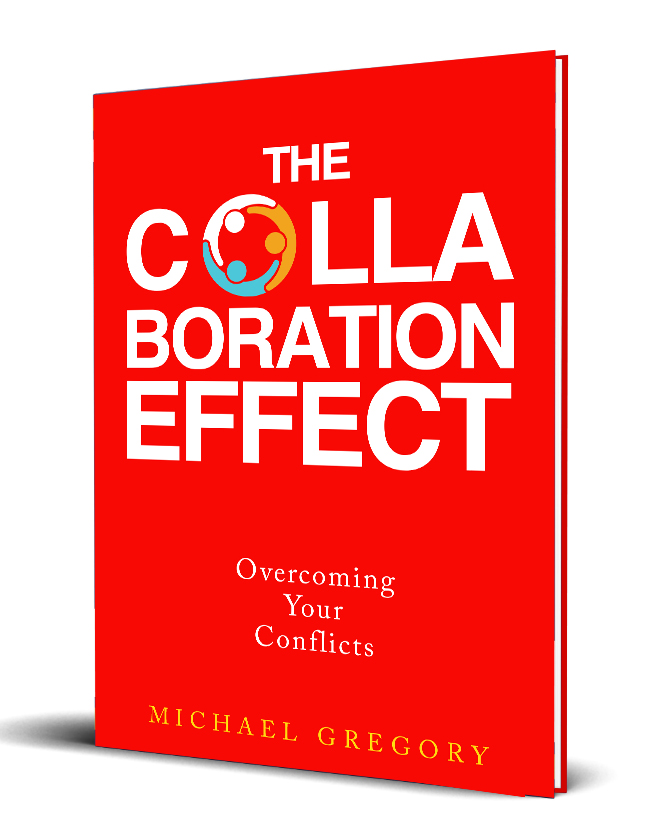
Trust is fundamental to business success, but too much trust may actually undermine collaboration based on an article in the Harvard Business Review by Per Hugander entitled “When Trust Takes Away from Effective Collaboration.” This can lead to conflict, disputes, frustration, lost productivity, poorer relationships, and more. For example, an employee may withhold information or share incorrect information when bad news has to be given to avoid conflict. To promote collaboration with your leadership there needs to be a balance between trust and collaboration. The commentary that follows summarizes key points from that article and offers insights based on this author’s experiences to help you in application.
What is trust?
In the book, The Collaboration Effect by Michael Gregory trust is defined as
“a firm belief in reliability, truth, or strength in someone or something.”
Relative to someone it means you can count on them. Trust ranks right up there as a key factor for developing leadership. Good leaders are trusted by their followers. In David Horsager’s book, Trusted Leader, Horsager offers eight pillars that drive trust. These are
- clarity,
- compassion,
- character,
- competency,
- commitment,
- connection,
- contribution, and
- consistency.
A lack of trust may be your greatest expense. Focus and consistency matter. Others have to be confident in you. Gregory shares that “Nothing destroys trust more than your violating a private or professional confidence.” Trust is critical for success. By being authentic, compassionate, consistent, and considerate others will have faith in your integrity. Building trust takes time, patience, and commitment.
What is collaboration?
In its simplest form collaboration is simply two or people working towards a common goal. The collaboration effect is about building authentic, connecting, relationships: listening actively; and educating judiciously in order to build bridges and negotiate closure. When time pressures may not allow time to build a great relationship it may be necessary to assume trust and determine roles quickly.
Listening actively is key. Take time to understand where the other party is coming from.
Reinforce this by paraphrasing, summarizing, and empathizing with the other party given their concerns. It is possible for individuals or groups to collaborate with each other even when trust is unknown. The expediency of the task may require immediate actions before trust even has time to be initiated. The task at hand may force collaboration not allowing time for trust to develop.
How can too much trust be negative?
If there is an over emphasis on trust over collaboration by participants, this may put a greater emphasis on being trustworthy resulting in participants not sharing the whole truth or even deliberately sharing inaccurate information when things are not going as planned. Hugander shares five reasons why appearing to be trustworthy can interfere with complex collaboration:
- “New individuals hold back information, challenging questions, and out-of-the-box ideas in order to establish themselves as competent, benevolent, and trustworthy.
- Individuals representing the old norm who are not experts in the area of transformation hold back questions and hide ignorance and knowledge gaps because they’re afraid to appear less competent and trustworthy.
- When things don’t go according to plan, individuals hide information or share an inaccurate picture of the situation to avoid looking incompetent or like a failure.
- In cross-collaborative settings, individuals withhold information, questions, and ideas because there’s a history of distrust between different departments.
- Individuals refrain from openly changing their mind, as they’re afraid of appearing inconsistent and unpredictable”
He offers that the more emphasis that is placed on trust the more these issues take place. The question then is what is the appropriate balance between trust and collaboration?
Appropriate balance between trust and collaboration
Trust is important. You want to promote an environment based on trust. However, interpersonal trust is not a requirement or a prerequisite for collaboration.
Hugander points out that that there is a long standing and inaccurate perception that “collaboration is all about trust.”
Given this longstanding perception he realizes that his ten years of research in this area is not conforming to historical perceptions. However, his research bears this out.
When you meet someone new your hope is that you can trust this individual. Your brain likes predictability, a sense of control, and progress. First impressions mean a lot. Based on an initial impressions and intuition you decide quickly whether this person can be trusted or not. As you evaluate whether you can trust or not trust this individual you continually evaluate the other party based on your experiences with that individual.
As you balance more information you also evaluate how accurate that information is and whether that information is positive or negative. This is where open honest frank conversations come in. Yes, trust is important, but even if trust is not 100% completing the task with collaboration may still proceed. This is where The Collaboration Effect plays an important role.
Promoting collaboration
By being authentic and having a willingness to share and be open with each other it is possible to build a connecting relationship. To enhance the probability of success with someone you do not know consider an internet search with LinkedIn, Google, Facebook, and other sources. Explore what others know about this person from your network.
When you meet someone new for the first time in person or virtually take time to explore personal information and search for shared experiences, interests, and other elements you may have in common.
With individuals you do know, take the time to have social conversations at appropriate times and consider carrying out social interactions outside of the work environment to promote fun with understanding. Try to catch the other person doing things right and reinforce positive actions. Try and do this regularly. Give the other party the opportunity to shine in achievement or leadership. Be conscious to ensure you are properly supporting the other party with appropriate time and resources as perceived by the other party. At times this may not be possible. That is where having an open and frank conversation is necessary to make sure everyone is on the same page.
By taking the time to really listen and understand where the other party is coming from and then sharing how you can help and add value this promotes a mutual collaboration that both of you can celebrate going forward. The commentary offered by Hugander may at first seem counter intuitive, but he suggests “shifting attention away from trust might be one effective way to quickly build trust” with others.
About the author
Mike Gregory is a professional speaker, an author, and a mediator. You may contact Mike directly at mg@mikegreg.com and at (651) 633-5311. Mike has written 12 books (and co-authored two others) including his latest book, The Collaboration Effect: Overcoming Your Conflicts, and The Servant Manager, Business Valuations and the IRS, and Peaceful Resolutions that you may find helpful. [Michael Gregory, ASA, CVA, MBA, Qualified Mediator with the Minnesota Supreme Court]

